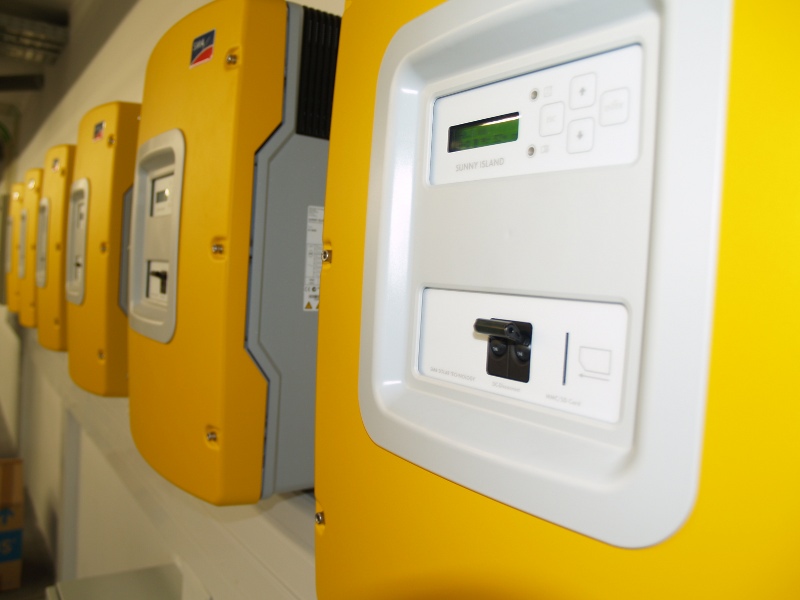4 large smart grid demonstrators will be installed in Europe until 2017
European energy project, UPGRID, features INESC TEC as partner
03rd March 2016
Until 2017, four large smart grid demonstrators will be installed in Portugal, Spain, Sweden, and Poland. The goal is to develop and implement monitoring and control solutions, including new equipment and systems, that will promote the users’ participation in the energy marker. This project will be receiving an investment of €15.7M, €11.9M of which from the European Union. Project UPGRID (Real proven solutions to enable active demand and distributed generation flexible integration through a fully controllable LV and MV distribution grid) will be developed by a European consortium, as part of the H2020 programme, composed of 19 partners from 7 European countries: Portugal, Spain, Poland, Sweden, United Kingdom, France and Norway (the latter is an associate country).


The four demonstrators
The demonstrators will start being installed in 2016, at Parque das Nações, in Lisbon (Portugal), at Bidelek Sareak, in Bilbao (Spain), in Gdynia, Gdansk area (Poland), and in a rural area in the south of Sweden.
The EDP, INESC TEC, Withus and NOS will be responsible for the Portuguese installation, which will involve about over 20 thousand residential users.
The Spanish demonstrator will be developed by Iberdrola, Eve, General Electric, Ziv and Tecnalia, and will involve 190 thousand consumers. In Poland, the demonstrator will be implemented by Energa Operator together with Atende, Instytut Energetyki and Politechnika Gdanska, and involving 14,700 consumers. Finally, the Swedish demonstrator will be implemented by Vattenfal, General Electric, Schneider Electric and Powel AS, and cover about 528 consumers.


Improving monitoring and control of medium and low voltage grids
“We will be testing solutions that make it possible to integrate existing technology to form an integrated intelligent system. With this project, we want to improve the monitoring and control aspects of medium and low voltage grids, anticipating technical problems and introducing the end users in the energy process, bringing suppliers and clients together. This is the most innovative aspect of the project”, explains Luís Seca, coordinator of INESC TEC’s Centre for Power and Energy Systems.
The impact of the project
The UPGRID will have a very relevant economic and social impact as the entire process of implementing the smart cities will involve not only the end users, but also all the agents operating the power grid.
“The expected impact of this project indicated that it will eventually be necessary to implement new measures to access the electricity market. This includes introducing new regulatory policies that will reduce the overall supply costs of the system, benefiting the end users. It will also be necessary to study the social impact, taking into consideration concerns such as data protection and public acceptance, so that citizens have a full understanding of the financial benefits brought about by the solution”, the researcher explains.

The partners
The UPGRID is coordinated by Iberdrola Distribución Eléctrica (Spain), and partners include INESC TEC and EDP Distribuição – Energia, Withus and NOS, in Portugal, Fundación Tecnalia, Universidad Pontificia Comillas, ZIV, Asociación Instituto Tecnológico de la Energía and Ente Vasco de la Energía, in Spain, Energa Operator, Atende, Politechnika Gdanska and Instytut Energetykl, in Poland, Vattenfall Eldistribution, in Sweden, Imperial College London and General Electric, in the United Kingdom, Schneider Electric Industries, in France, and Powel, in Norway.
The UPGRID started in January 2015 and will be concluded in December 2017.
Three of INESC TEC’s centres will be involved in this project. The Centre for Power and Energy Systems (CPES) and the High-Assurance Software Laboratory (HASLab) are working on work package 2, which will be focusing on innovative applications for distribution systems and their features. CPES is working on the relationship between stakeholders, meaning the interaction of clients with system operators. HASLab is responsible for developing the platform (called Market Hub) which will be handling all sensitive information. The Market Hub will feature reliable software providing differentiated access to commercial and technical information on the low voltage grid. The platform also allows the electricity supplier and the distribution system operator to exchange information on the flexibility of the demand side (for instance, the limits to the power contracted in emergency situations). It will also promote a greater consumption elasticity by publishing information on energy prices.
CPES is also working on work package 4, where the goal is to install the Portuguese demonstrator, together with the EDP Distribuição, NOS and Withus. Lastly, INESC TEC’s Centre for Industrial Engineering and Management is working on work package 9, where the goal is to identify the groups of stakeholders and the social impact of the UPGRID. INESC TEC is the leader of this last work package.
INESC TEC, February 2016


